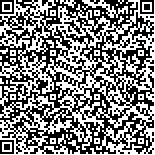下载中心
优秀审稿专家
优秀论文
相关链接
摘要

漫衰减系数常用于计算水体浑浊度和划分水体等级,是水中生物进行光合作用等生态过程中的重要参数。本文假设水体固有光学特性(IOPs)不随垂直剖面变化,水体表面为镜面。通过Monte Carlo方法模拟追踪光子在水中的运动过程,统计大量光子在不同深度上的能量分布,计算出下行漫衰减系数Kd值。结果表明:在450 nm,550 nm和650 nm波长处模拟的Kd值基本上小于实测Kd值,对应后向散射概率为3%的散射相函数模拟的相对误差最小,适合用于构建太湖水体的Kd值反演模型。进一步分析入射天顶角、b/a值对Kd值变化的影响,结果发现:在b/a较大的情况下,散射相函数成为影响Kd值变化的主要因素。当b/a值大于9时,入射天顶角从10°变化到80°时,Kd值的变化率小于10%,可忽略入射天顶角的变化对Kd值的影响。利用单一散射相函数模拟不同波长处的Kd值,发现悬浮颗粒物浓度较高且以无机颗粒物为主体时,450—550 nm内模拟值大于实测值,550—650 nm内则相反,说明随着波长的增加,水体中颗粒物的散射呈现出前向散射减弱、后向散射增强的变化趋势。在反演不同波长处的Kd值时需考虑到散射相函数的光谱变化所造成的误差。
关键词:
Monte Carlo 数值模拟 漫衰减系数 入射天顶角 散射相函数The diffuse attenuation coefficient (Kd) is an important property related to the penetration and availability of light underwater, which is of fundamental interest in studies of primary production, physical and biological process. The remote sensing estimation of diffuse attenuation coefficient can reveal the change of underwater light field, which is one of the main ways to obtain the diffuse attenuation coefficient.
Models developed in the recent decades were mainly based on theoretical and numerical(radiative transfer)simulations. In this paper, a Monte Carlo calculation procedure has been developed for modeling of the penetration of light into turbid inland waters found at Meiliang Bay of Taihu Lake. We assume the water optical homogeneously, inherent optical properties (IOPs) do not change with depth, the water surface as a mirror, We can use the Monte Carlo method to simulate the movement process of photons in the water, energy distribution statistics of a large number of photons at different depths, calculate the downward diffuse attenuation coefficient value.
We use several phase function with different backscatter fraction and overall shape as comparison. The results indicate that in the same condition of sun zenith angle and absorb coefficient (a)、scatter coefficient (b), simulated Kd values appear quite different when choose different scattering phase function. Simulated Kd values based on phase function applied to ocean or slightly turbid waters are less than the measured values. Within 450 nm, 550 nm, 650 nm band, the relative error between simulated Kd value with phase function that have a backscatter fraction of 0.03 and measured Kd value is the minimum. The phase function that have a backscatter fraction of 0.03 is more appropriate to develop a semi-analytical model based on inland turbid lake water than particular normalized phase function used in ocean water. We use the MC model to discuss the relationship between variation of sun zenith angle and phase function and Kd value. It turns out under the condition of high values of b/a, phase function become the main factor to effect the change of Kd value. When b/a values are greater than 9, the incident zenith angle changes from 10° to 80°, the rate of change in Kd values is less than 10%, so the impact of the variation of the sun zenith angle on the change of Kd value is negligible. Using a single wavelength scattering phase function to simulate Kd values at different wavelength. It’s found that in more turbid water, when the wavelength are less than 550 nm, simulated values are greater than measured values, in contrast, when the wavelength are greater than 550 nm, simulated values are less than measured values, which indicate that with the increase of wavelength, the scattering properties of particulate matter in water appear a variation trend that it’s weaken in the forward scattering and heighten in the backward scattering.
When we develop the remote sensing model of Kd value for inland lake water type. We should consider the difference of scattering properties of water. Under different concentration of suspended matter and different wavelength, we should consider the spectral variation of the phase functions and use the phase function with the correct backscatter fraction.

